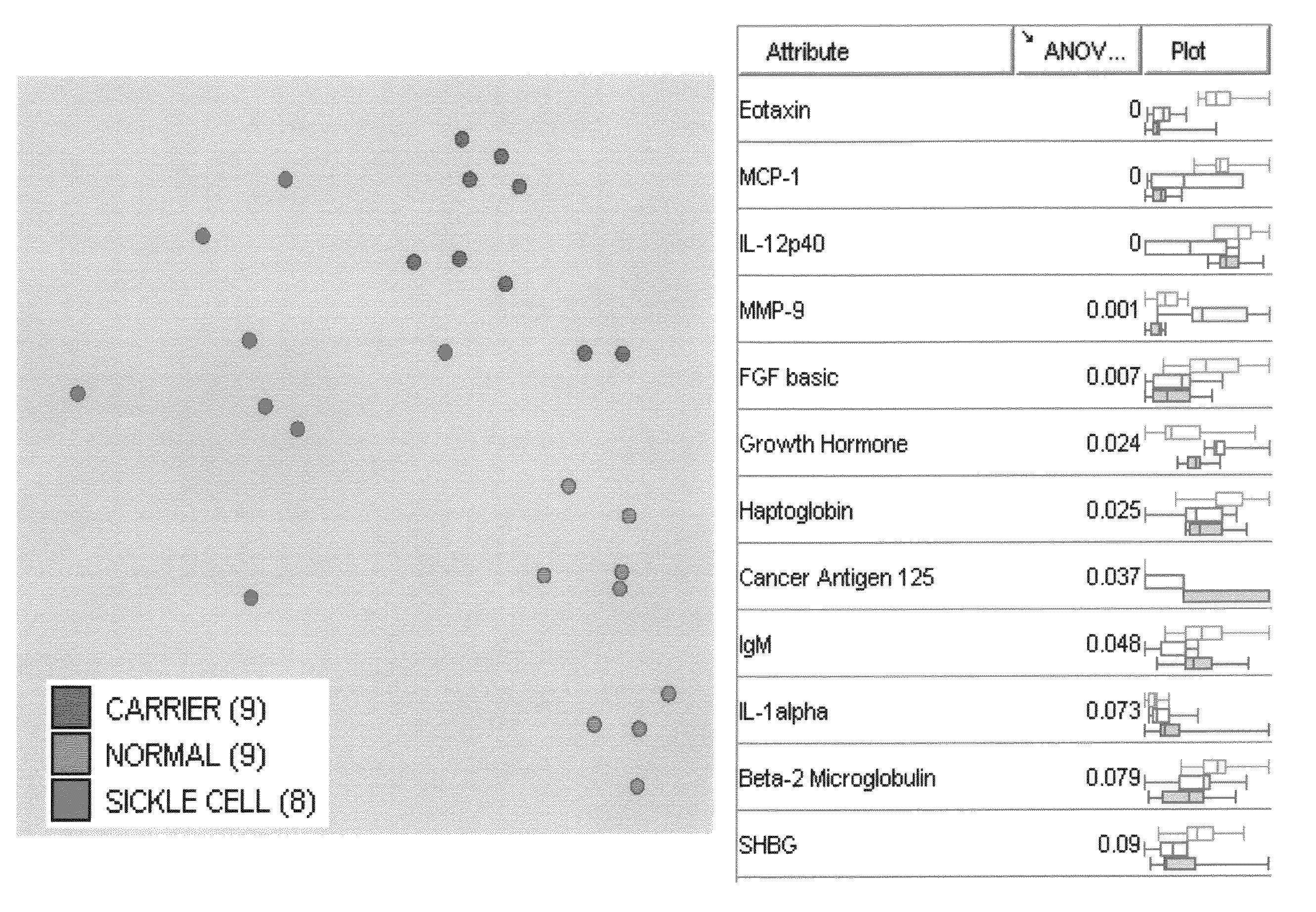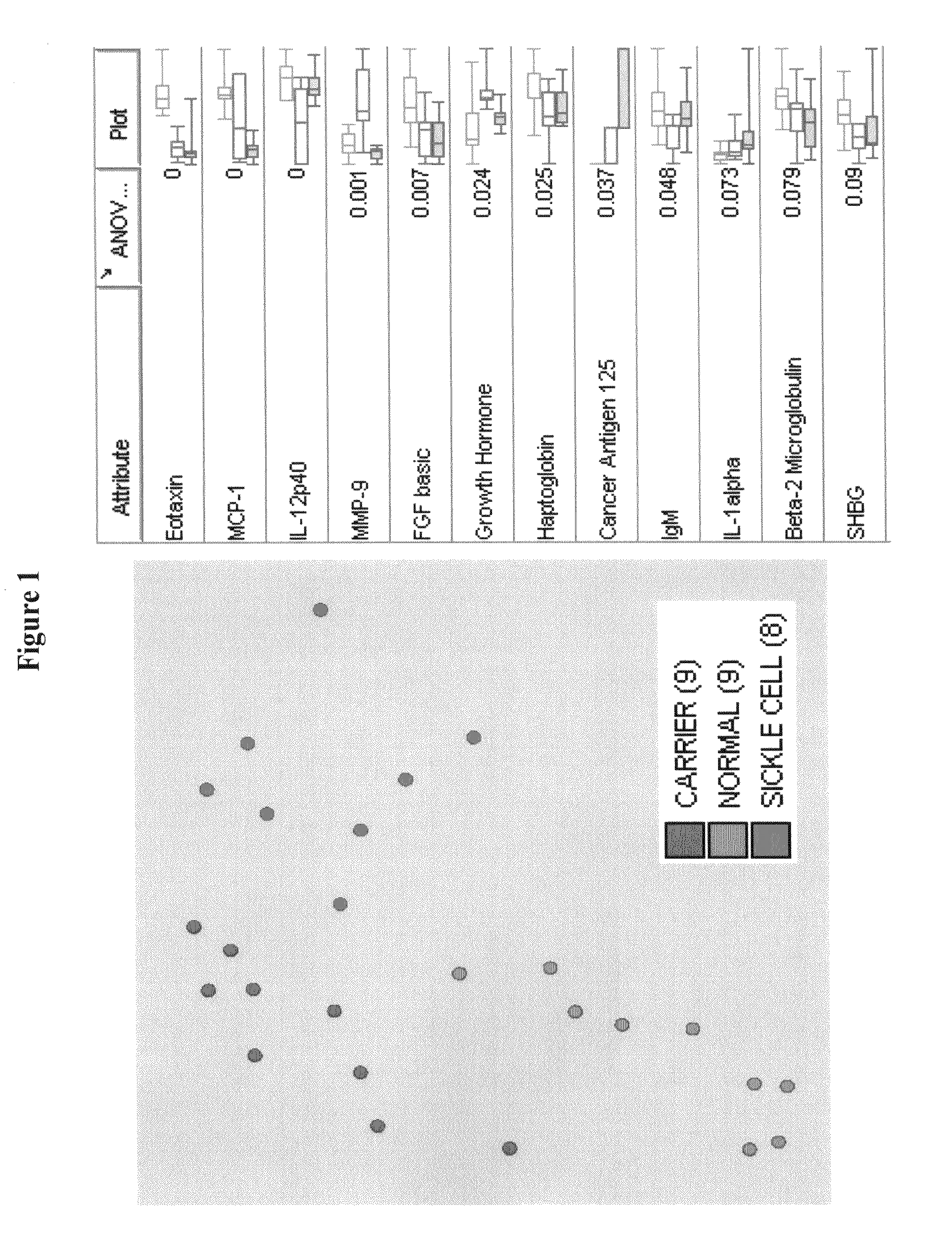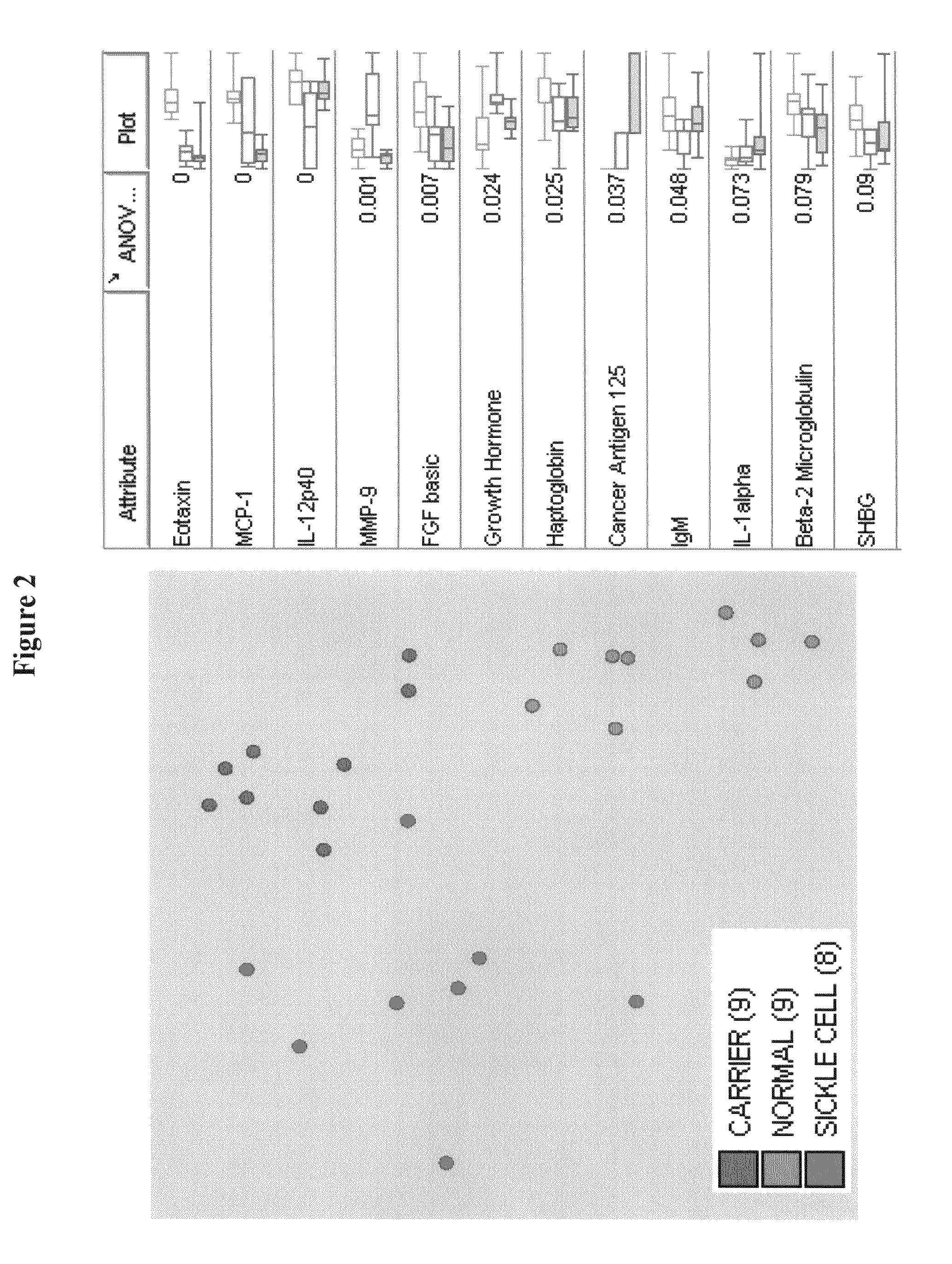Methods and kits for the diagnosis of sickle cell
a technology for sickle cell disease and kits, applied in the field of methods, kits and reagents for detection and/or diagnosis of sickle cell disease, can solve the problems of lack of selectivity and sensitivity of current assays for sickle cell, high mortality of sufferers under the age of five, and inability to cure sickle cell disease, etc., to achieve rapid detection and/or accurate diagnosis of sickle cell
- Summary
- Abstract
- Description
- Claims
- Application Information
AI Technical Summary
Benefits of technology
Problems solved by technology
Method used
Image
Examples
example i
[0051]Patient Population. The patient population was chosen based on conclusive diagnosis of SCD. A sample of blood, which was tested, was obtained on admission to the hospital. The normal or control patient population was chosen from a wellness clinic. These control patients had no indication of suffering from sickle cell. Consent and blood specimens from all participants were obtained under IRB Protocol.
[0052]Collection and storage of blood specimens: Ten mL of peripheral blood was drawn from subjects using standardized phlebotomy procedures. Blood samples were collected without anticoagulant into two 5 mL red top vacutainers, sera were separated by centrifugation, and all specimens were immediately frozen and stored in the dedicated −80 C freezer. All blood samples were logged on the study computer to track information such as storage date, freeze / thaw cycles and distribution.
[0053]Additionally, CA-125 reagent for multiplex system was developed using antibody pair purchased from ...
PUM
| Property | Measurement | Unit |
|---|---|---|
| concentration | aaaaa | aaaaa |
| concentration | aaaaa | aaaaa |
| concentration | aaaaa | aaaaa |
Abstract
Description
Claims
Application Information
 Login to View More
Login to View More - R&D
- Intellectual Property
- Life Sciences
- Materials
- Tech Scout
- Unparalleled Data Quality
- Higher Quality Content
- 60% Fewer Hallucinations
Browse by: Latest US Patents, China's latest patents, Technical Efficacy Thesaurus, Application Domain, Technology Topic, Popular Technical Reports.
© 2025 PatSnap. All rights reserved.Legal|Privacy policy|Modern Slavery Act Transparency Statement|Sitemap|About US| Contact US: help@patsnap.com



